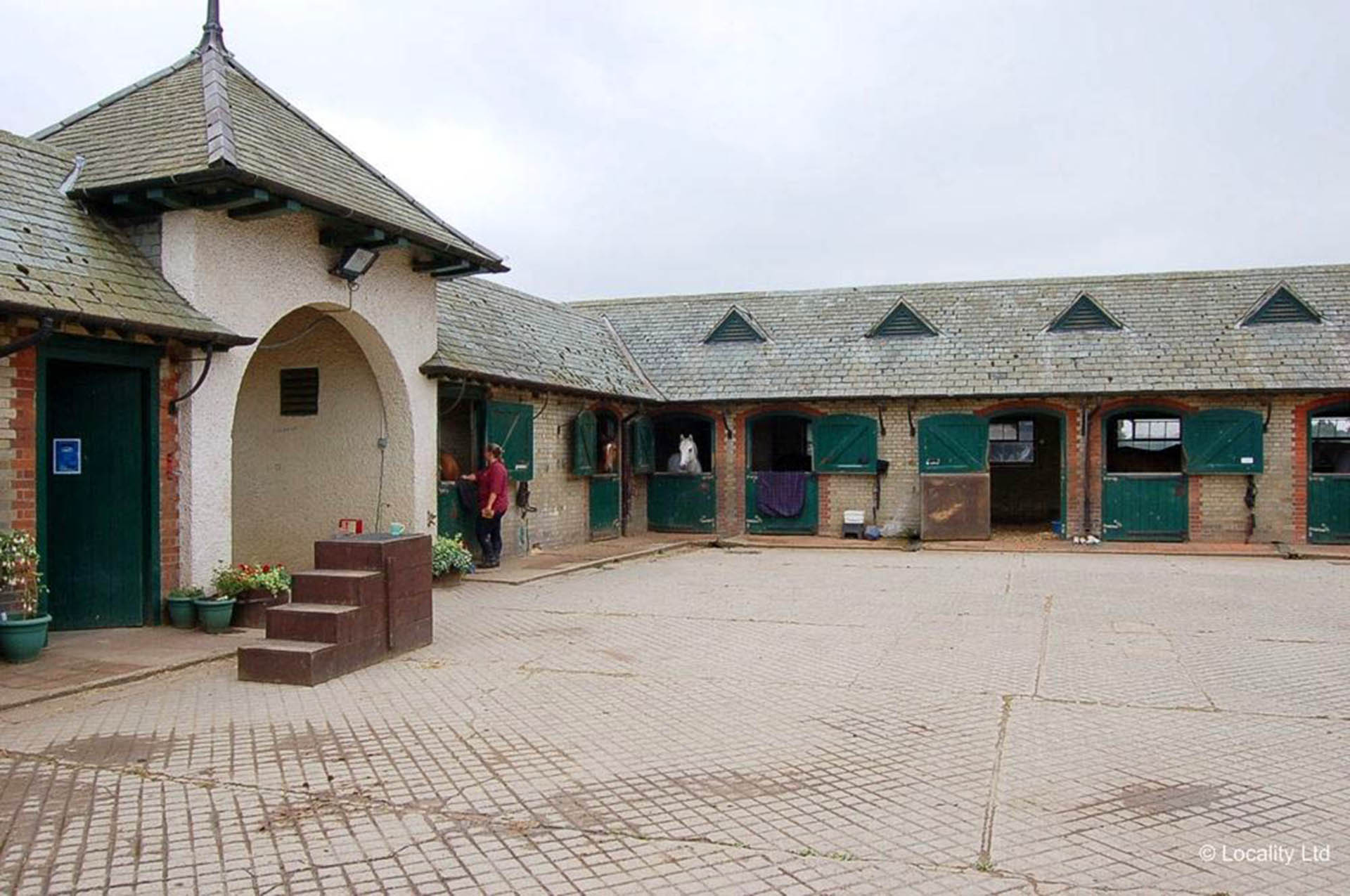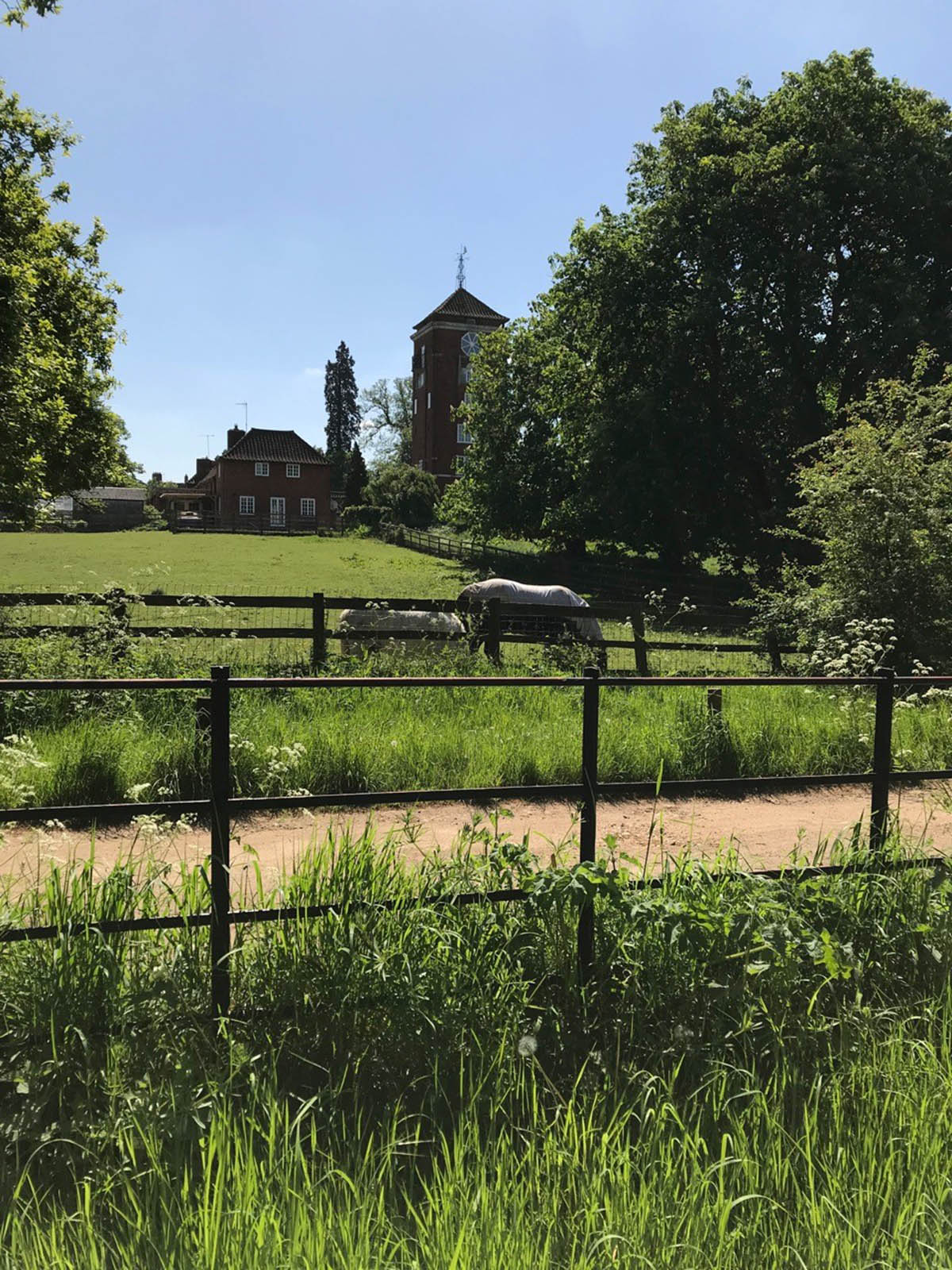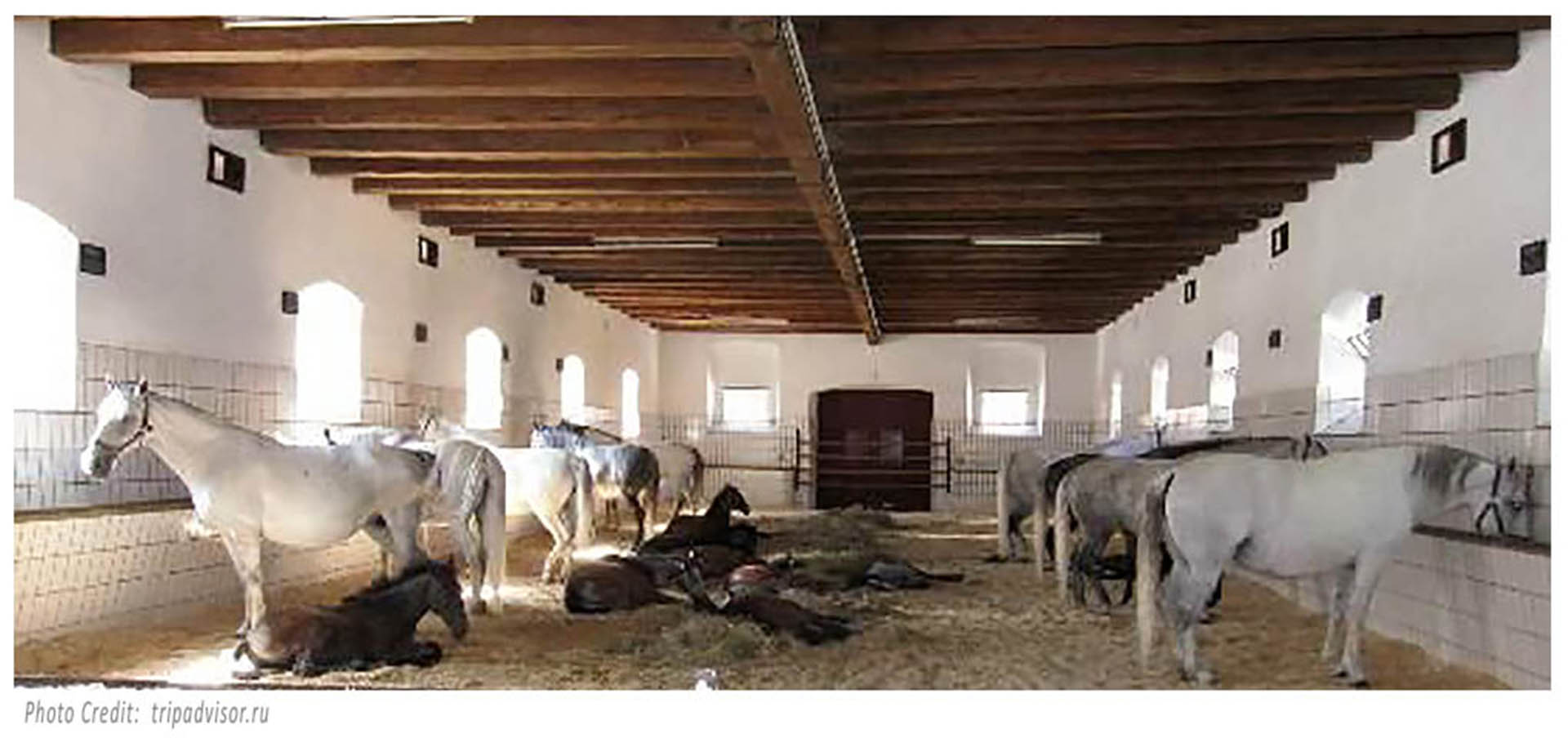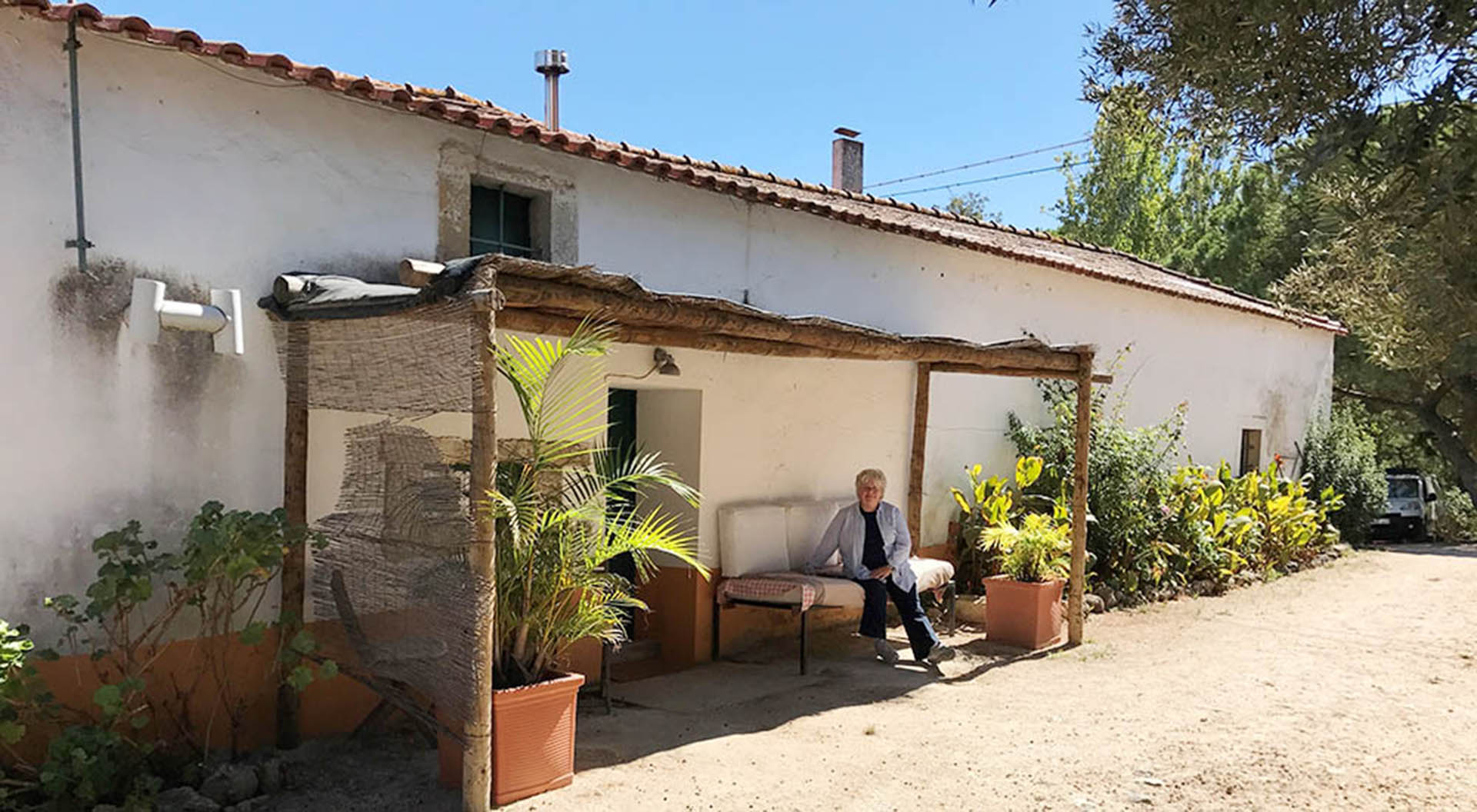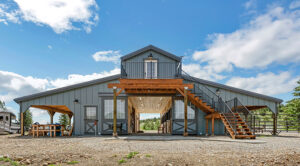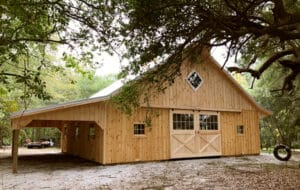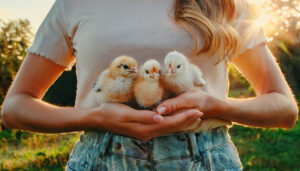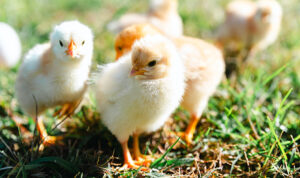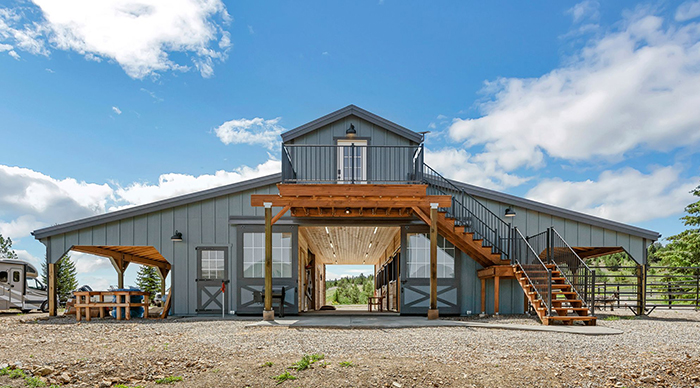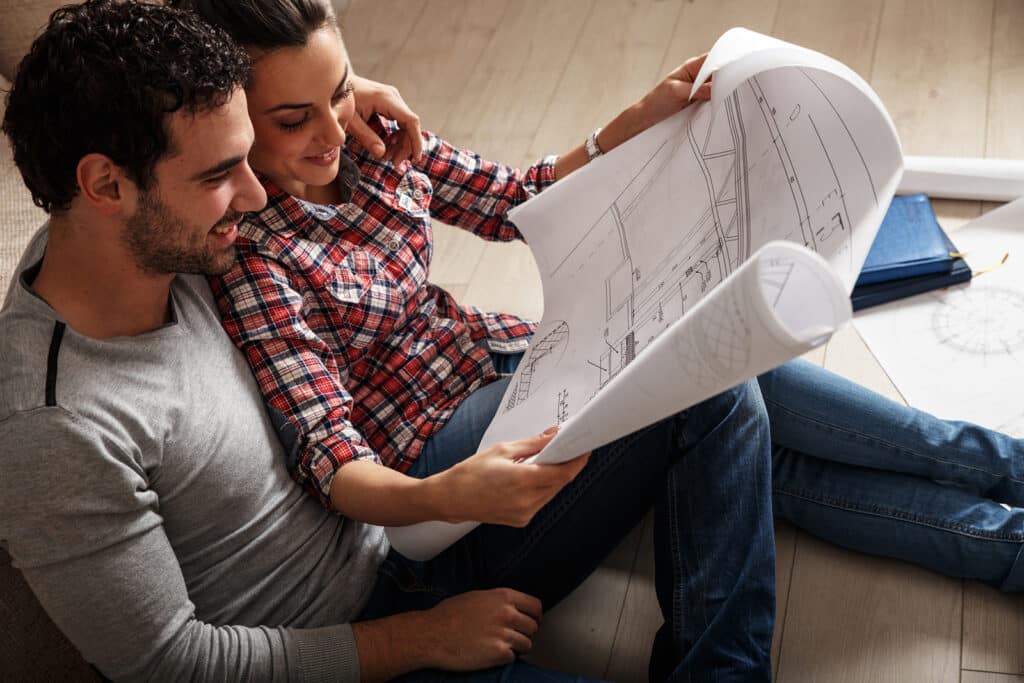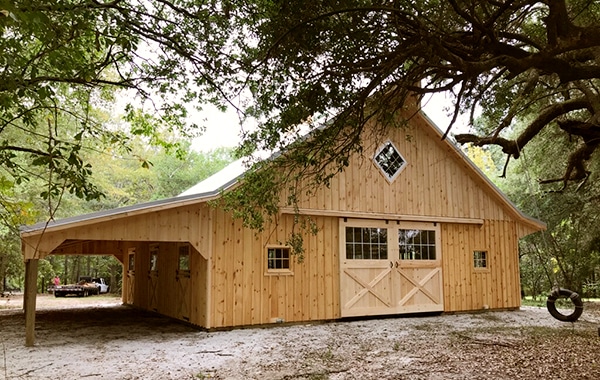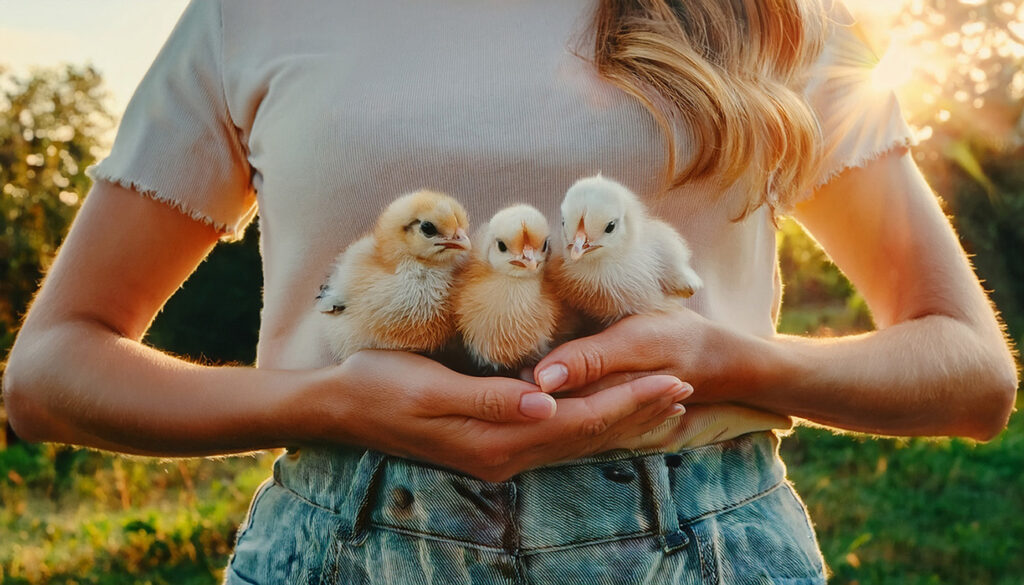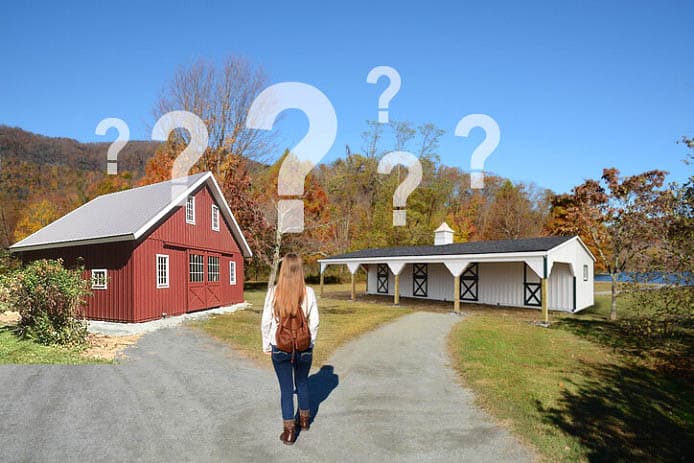Growing up as a horse mad child in England I certainly spent an inordinate amount of time in stable yards and around horses. We called our equine abodes stables not stalls, and more times than not these were built of brick and mortar. The traditional stable had a Dutch door, and the yard usually comprised of a line of stables all of the same size with a feed or storage room tagged on the end. Sometimes the stables were set in a square with a courtyard in the middle and sometimes they were set in an L-shape.
Of course Britain enjoys a rich tradition of everything equine. The village where I was born was host to frequent visits from British royalty who came to enjoy foxhunting. Kings through the ages would come with their huge entourages to gallop the lands, arriving by river transport from London and in more modern eras by train. Lord Rothschild’s racehorses ran in large pastures on the hill just up from my house, and I confess to sneaking in to nose about his beautifully kept stable yards with my younger brother and teasing each other into jumping onto the Thoroughbred mares in the paddock bareback when no-one was looking. Needless to say the latter activity was a huge mistake. We didn’t stay mounted long!
The weather was often damp and rainy, and wherever we went the stables were always deeply bedded in straw to protect the horses from the cold concrete floor. Back then there were no rubber mats or shavings anywhere to be seen.
Today many British stable buildings have been converted to housing. This includes the beautiful large stable yard at the clock tower at the estate where I lived during my teenage years at Stockgrove Park in Buckinghamshire.
Four homes, North, South, East and West cottage have replaced the 25 stables and the courtyard is the parking lot. During a visit earlier this year, I visited my farm neighbor to find their stable yard had also been converted for human habitation. I must say I was very sad to see that. I told the new farm owners of my memories of the stable yard, the endless tacking up and grooming of horses and ponies. The large metal rings where we used to tie up our ponies still adorned the brick wall.
Brick stables are very practical to hose down with water but can take some serious effort scrubbing to keep truly clean and there is nothing for the horses to nibble except the wooden Dutch door, so those are often gnawed. The brick walls are also unforgiving when a horse becomes cast or kicks out, and our show horses were always wrapped in standing bandages to protect their legs from the rough walls.
I once visited a leading Shire horse breeder in Cheshire and the owner proudly showed me his line of stallions. I was astonished to see these massive horses were all housed in 14 x 14 foot brick stables, with a line of electric wire held by brackets a foot off the interior walls, to prevent the horses from rubbing on the wall. The building was sturdy, and I could not imagine these noble beasts could possibly damage it but evidently the owner did not agree.
Much of Europe houses horses in brick stables or stone buildings due to the traditional building methods of brick and mortar. Much of my time training in Germany was spent in wooden or metal indoor arenas but the stable yard was almost always brick and mortar. The more modern yards had lined the stables with wood, to protect the horse from the harshness of the brick walls.
During my trip to Piber, the young Lipizzaners shared a large stone building.
At the palace stables in Vienna, the Lipizzaners used to stand in straight stalls. During my recent visit with my husband Paul to the famous Borba yard in Lisbon, Portugal, where the famed dressage master Nuno Oliveira started out as an apprentice, we were housed the other side of the wall from the Lusitano horses, in a tiny but functional converted cottage.
Even in the heat of late summer the rooms were cold and dampness pervaded the space.
At home during chilly winter months and rainy days, the stables held the cold and dampness emanated from the walls. Horses were blanketed in layers of hessian material that had been retrieved from feed sacks and surcingles held these layers in place. If the horse was being cooled out after a hard work out, then we’d stuff straw between the hessian layers to provide extra warmth with an air-filled straw layer that served to draw the heat from the horse and help it dry off. There was no money for fancy blankets and it took ages to unwrap your horse for riding and wrap him back up afterward.
Then along came the modular stable. Every horse mad kid that wanted a pony could theoretically now have one in their own backyard, if their parents could be talked into converting the precious garden into a paddock. The structures were quick and easy to place, and provided natural insulation with their wood walls. The horse magazines of the day, such as Horse and Hound and Riding were littered with advertisements for this wonderful portable stall invention.
When you think about stalls in America, you always think first of a wood stall. My first livery location on arrival in the U.S.A. was Caumsett State Park at Lloyd Harbor, Long Island, N.Y., was a 40 stall tin structure with 40 stalls with dirt floors and wood walls. This Marshall Fields estate, also boasts a wonderful brick horse barn, but that was reserved for the leaseholder’s Grand Prix showjumpers or famous visiting equines.
There are many advantages to a wooden horse stall over a brick or metal horse stable. Wood absorbs sound and moisture, which makes the environment drier for the health of your horse and quieter. You don’t have to worry about condensation that metal produces and you and your horse are not subject to noises caused by the creaking of the metal during rapid temperature changes or during high winds.
Wooden structures are not just warmer than metal or brick in winter, but also cooler than metal structures during summer months.
Another factor that horse owners don’t always consider, is that a wrongly placed kick from a horse that hits the side of a building fashioned out of metal, will assuredly result in a serious injury to the horse. I was visiting a neighbor some years ago and he proudly showed me around his brand new metal building. Inside he had placed gates in squares to house the horses for his sales business. The horses were bedded on shavings, and the tin walls formed one wall of their living space. Outside the building, horses grazed in the pasture adjacent to the metal walls.
Needless to say I pointed out the hazard of the proximity of metal to horse hooves and the neighbor thanked me and promptly had a protective wooden wall installed around the interior of the building. However, to this day horses still graze right up to those outside walls. A foolish risk to take but one that sadly many folks overlook until it is too late. There is good reason that run-in sheds are made out of wood.
Additionally wood structures are very easy to redesign and manipulate if you want to add on to them, or reconfigure the interior space.
When you consider the design and features of your new barn building, whether you opt for a traditional shed row stable yard or a center aisle barn, it is smart to pay attention to where the barn will be situated and how it is kickboarded and sided.
Naturally the safety and well-being of the horse should always be forefront in designing horse accommodation and there are lots of options that the experienced team at Horizon Structures can help you navigate to ensure the final result answers all your needs and desires for equine care.
There are significant advantages to modular barn construction, not just in the ease of set up and fast delivery, but also in regard to adding to the structure later if required and customization of all facets and features of the building. Enjoy peace of mind with Horizon Structures warranties, take advantage of the financing options available and visit one of our buildings close to you for an up close and personal inspection of the top quality Amish structures we produce. You can visit our Barn Finder page to locate a building in your area with the added advantage you can chat with the owners to hear exactly how their purchasing experience went and receive lots of helpful advice from their perspective too.


